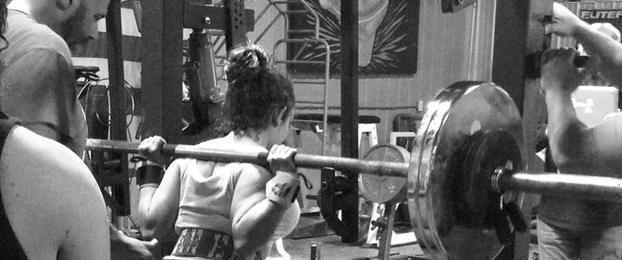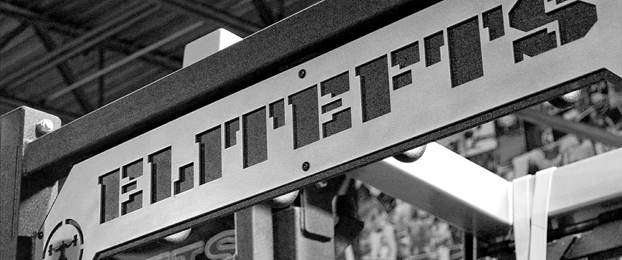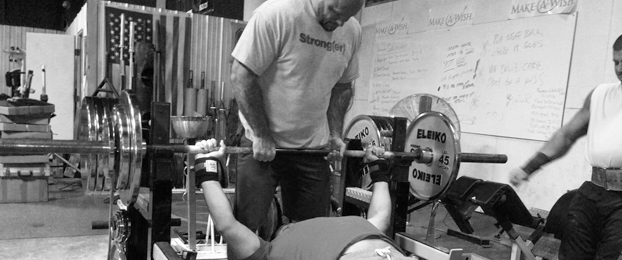
Muscle Retention
I’m looking for fat loss, not muscle loss. Muscle is metabolically active tissue, and if your body is going into a caloric deficit, it’s going to try to conserve itself as much as possible. This means it will decrease your metabolic rate and energy levels and even try to eat up muscle to try to keep its energy balance.
Losing muscle is unfortunately an often overlooked aspect of dieting and is one factor that leads to many people’s poor diet results during and after the diet period. What’s the point of losing weight if you’re losing muscle as well as fat? You’ll be a lighter, smaller, weaker but still fat version of your former self. Then when you go back to a more normal eating pattern, your previous metabolic rate will be lower because you lost muscle. This will cause the pounds to come back on more quickly than before, which will make you want to go on a diet and start the whole thing over again. Yo-yo dieting anyone?
Although it’s easily overlooked, it’s also easily solved. The solution is resistance training. By training muscles with resistance, you tell your body that you need to keep your muscle (and therefore a better metabolic rate). Because my whole training program is essentially some form of weight lifting, I’m set here. The one thing to note is that this doesn’t mean you should rep out weight 10, 15, or 20 times. To retain muscle and more specifically the type II muscle fibers, heavier compound lifts are needed. I’m not saying to max out every training session, but staying around the five rep range and lower with a sufficient amount of volume will be more effective.
Protein is obviously needed as well for muscle retention and building, but as stated above, that’s being taken care of. After all, you can’t build a brick house without bricks.
Strength Maintenance
Strength is based on two main factors—muscle size and neural efficiency. I talked about how I’m going to keep my muscle size through training and nutrition, so I’ll just quickly go into neural efficiency. Without getting too in depth, muscle coordination and recruitment control strength levels. With powerlifting, this is heavily focused on, so I didn’t want to lose the strength I had. Resistance training at an intensity level of 80 percent or higher results in better neural coordination and muscle recruitment. Compound lifts are the obvious choice here, so I’m planning on getting in some 80 percent and up intensity reps in the squat, bench press, and deadlift to keep my strength.
With those training objectives hashed out, it’s on to the training program. This is the plan for the next three weeks and the tentative plan for the next six weeks. After getting into it, if any adjustments need to be made, I want to leave it open, so I’m only locking in the next three.
Day 1
A) Bench presses, 4 X 2 >=80%
B) Squats, 4 X 2 >=80%
C) Single leg stiff legged deadlifts, 3 X 10
D1) Trap raises, 3 X 12
D2) External rotations, 3 X 12
E) Pallof presses, 3 X 5 X 5 seconds
Day 2
A1) Inverted rows, 4 X F
A2) Push-ups, 4 X F
A3) Jump squats, 4 X F
B) Kettlebell swings, 5m
C) Bike interval, 10m
Day 3
Rest
Day 4
A) Bench presses, 4 X 2 >=80%
B) Deadlifts, 4 X 2 >=80%
C1) Glue ham raises, 3 X F
C2) Face pulls, 3 X 15
D) Alternating arm dumbbell snatches, X 100
E1) Ab rollouts, 3 X F
E2) Face pulls, 3 X 15
Day 5
Rest
Day 6
A1) Pull-up variations, 4 X 8
A2) Dumbbell presses, 4 X 8
A3) Split squats, 4 X 8
B) Still legged deadlifts, 4 X 12
C1) Cable rear delts, 4 X 12
C2) Hanging ab curl-ups, 4 X F
D) Jump rope, 5m
Day 7
Rest
On day one and four, the first two exercises are the mainstays for my strength and muscle maintenance. They’re also part of the big, compound exercises that are metabolically demanding (and thus burn more calories). The metabolic demands aren’t as high as they could be with the lower reps I’m performing, but realize that the purpose is more for strength maintenance. The metabolically challenging exercises come into play more on day two and six. These days have the higher demand metabolic circuits. These were put on day two and six because the next day is a rest day, and I want to keep the metabolism churning even on my off days.
Day two’s “A1, A2, and A3” circuit is performed one right after another with the rest period coming at the end of the circuit. The first week has the rest period at 120 seconds before I repeat the circuit. I want to start a little higher because my level of conditioning isn’t the greatest. I’ve always focused mainly on strength training, and I don’t want to start out with something where I’m going to give up halfway through the circuit or start puking. The progression for this from week to week is to add a set and reduce the rest time by 30 seconds. So the next week will be 5 X F with 120 seconds rest, then 5 X F with 90 seconds rest, and so on. The kettlebell swings and bike intervals are similarly planned to either increase in intensity or reduce in rest.
Day six’s “A” exercises are performed with rest in between each. The first week is 60 seconds between each, and in the subsequent weeks, I’ll either increase it by a set or decrease the time by 15 seconds. So I’ll go from 4 X 8 with 60 seconds rest to 5 X 8 with 60 seconds rest and then 5x8 with 45 seconds rest and so on. Jump rope will increase from week to week as well.
The rest of the exercises are geared mainly toward pre-habilitation and postural correction. Lower trap and upper back work are done to provide some structural balance. Abdominal work is something I need to hit a bit harder so that’s included most days. Foam rolling and mobility drills precede the workout as the warm up, and I also do some mobility, activation, and stretching in between sets, which I didn’t include. This is also more for pre-habilitation and postural correction to make sure the muscles that are working are the ones that are supposed to be and the flexibility is there for proper exercise technique.
Progress Indicators
As a preface to talking about these progress indicators, I wanted to give a shout out to Dr. John Berardi as I grabbed this tracking from his Precision Nutrition system. Yes, I tracked things before I got Precision Nutrition, and yes, I’ve seen these indicators before. But it was nice to just copy a page from the book to use to mark my progress.
Caliper measurements: Calipers are a good way to measure subcutaneous fat. This is a good way to actually measure whether or not you’re losing fat or muscle and from where on your body. I’m using the typical seven sites used in the Jackson-Pollock method of body fat testing. I’m using this as an indicator, not actually plugging in the numbers to calculate body fat because there is a deviation of a few percentage points with this testing method along with the fact that I’m just using some cheap calipers. I’m hoping they’re actually precise even if they might not be accurate. I’m checking this every two weeks.
Body weight: Unfortunately, body weight is the gold standard that people use for their results. Body composition is much more important than weight, but this is still a good indicator to use alongside these other ones. I will be taking weight measurements weekly.
Girth measurements: No, I’m not going to make some off color joke on this. Get your mind out of the gutter. Girth measurements (arm, chest, and waist) are another good indicator to use along with weight for comparison. If calipers aren’t available, this is the best way to measure progress. If body weight goes down, you’d better hope the waist measurement went down and not up so that you know your abdominal region fat is decreasing. This will be measured every two weeks.
Pictures: I know all the ladies are excited to see these, but I’ll have to apologize. Working in an office all day along with enduring the Michigan winter has left me fairly albino looking. You’ll have to excuse me if I pass on showing you these. Note this indicator really isn’t too objective, but it is a nice subjective way to measure progress in a very visual way. I’m hoping to see some significant changes from the week one to week six photos.
Accountability
I really have to give props to Mr. Berardi again on this. For me, he’s the one who really popularized the 90 percent rule and the use of outcome based decision making. I have a plan, but if I’m not following that plan at least 90 percent of the time, how can I really say whether or not the plan is working? If I didn’t get results, does it need adjustments or was I just not following it? If I did follow the plan, are my results reflected in it? If not, what do I need to change?
To help track this, I made up a simple spreadsheet to make sure I was following my plan. Each day has a box to check off for my meals, training sessions, 30-minute walks, and at least 100 ounces of water. Now I can look at the results (or lack thereof) in my indicators and correlate it with the spreadsheet to see if the plan worked or needs adjustment.
The Execution
With the plan in place and indicators to check progress, I’m all set to start. Six weeks from now, I could be leaner, stronger, weaker, or fatter. (Personally, I’m going with leaner but then where would the anticipation be?) Regardless of the outcome, I will be wiser and have a much better idea of what will work and what won’t due to this plan.
So have you been fumbling around with your training, adding things in and out for no apparent reason? Think you’re getting results but really have no clue because you have nothing to compare it with? Hopefully, this has given you an idea of how to set up a training cycle with goals, a plan to reach them, and accountability. In six weeks, I’ll report back with results, changes, and any tips or tricks I learned on my little project. In six weeks, will you be able to do the same?











